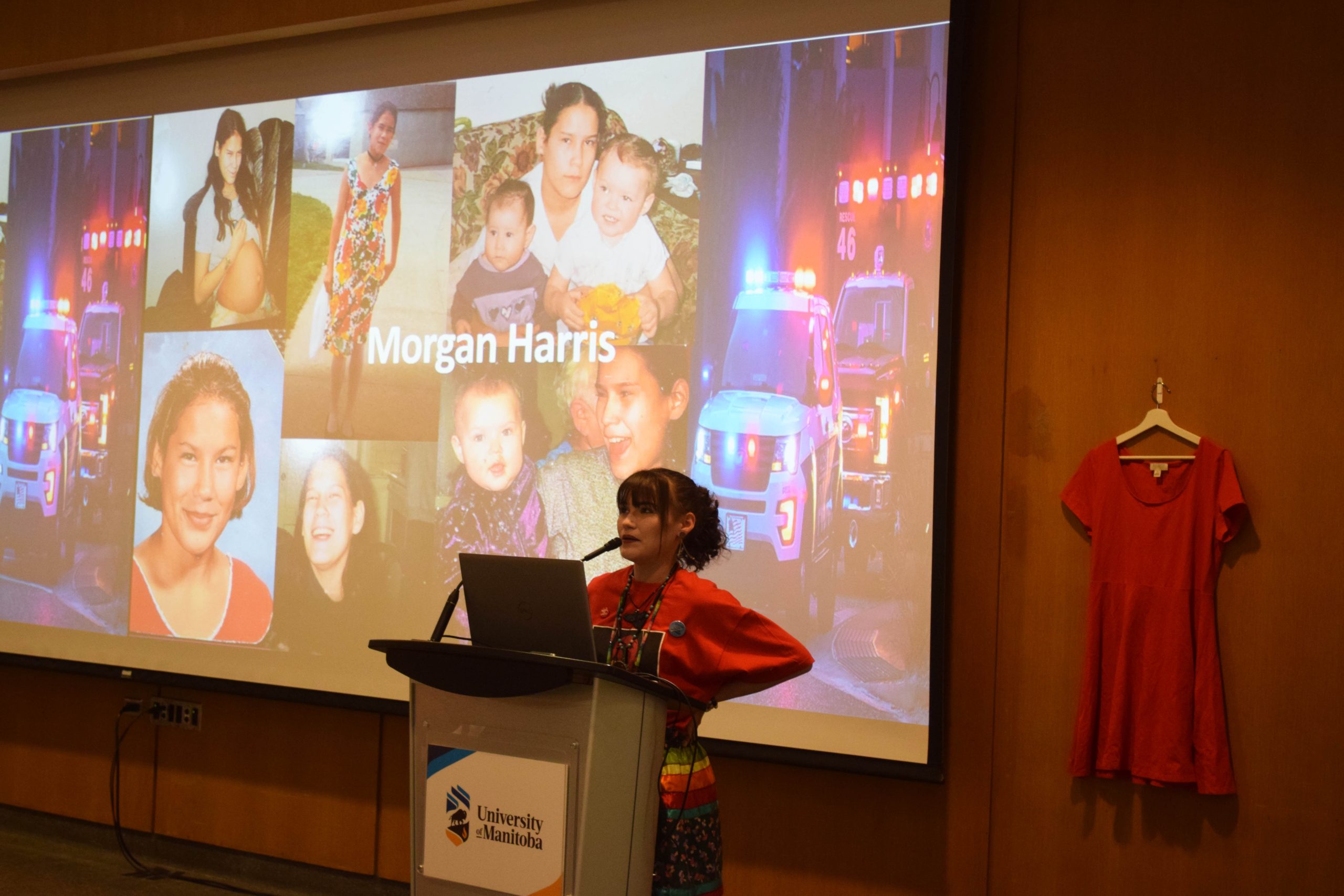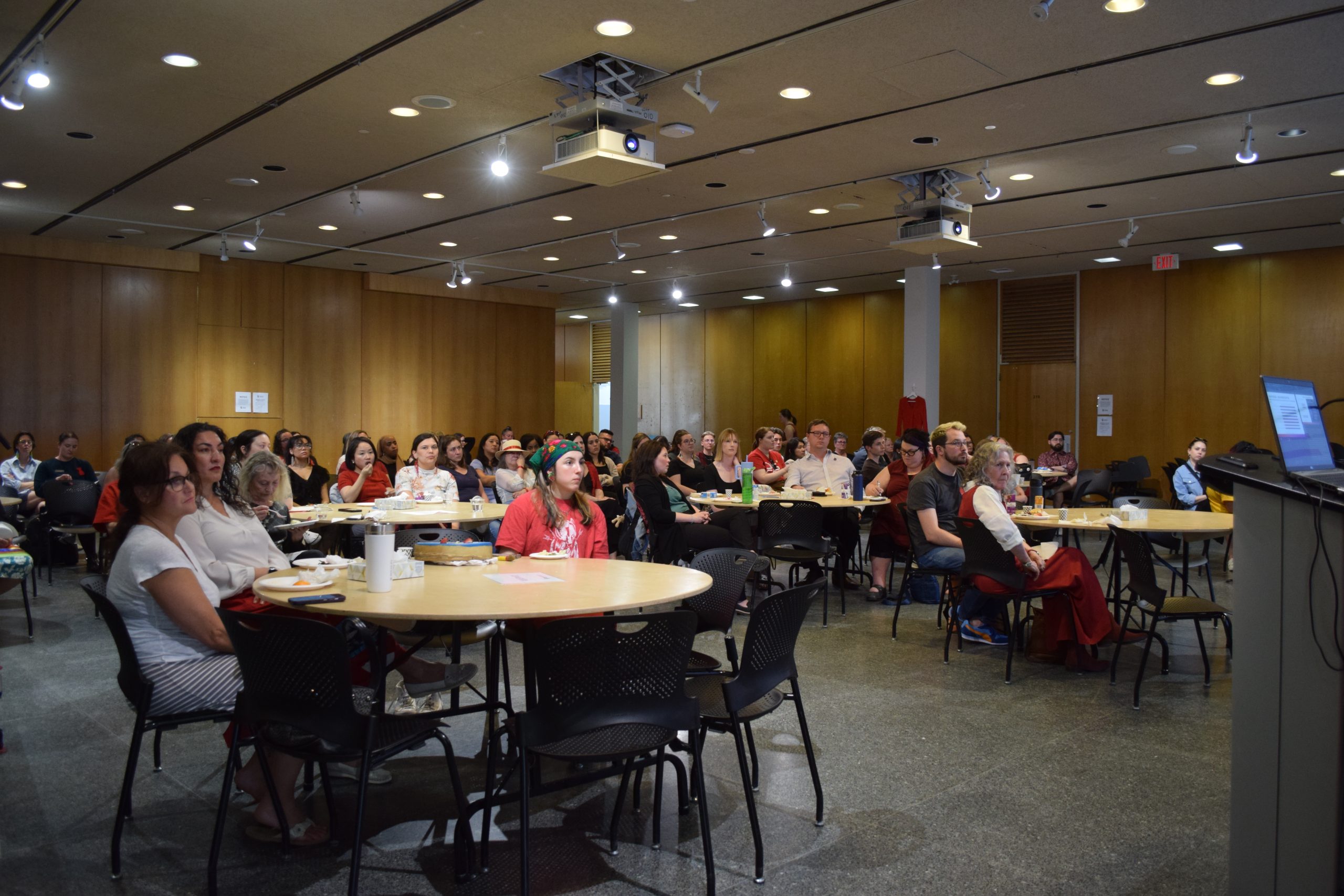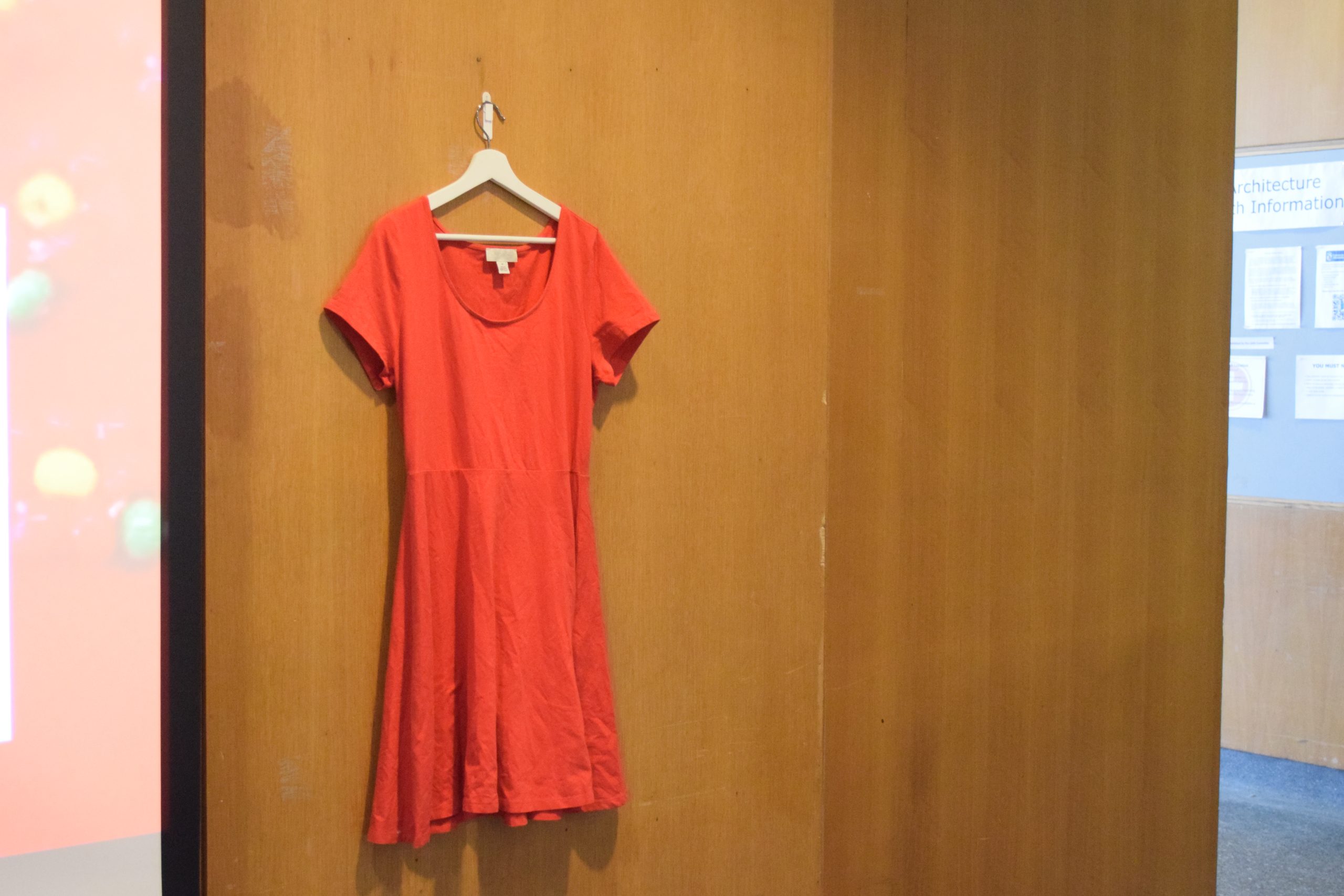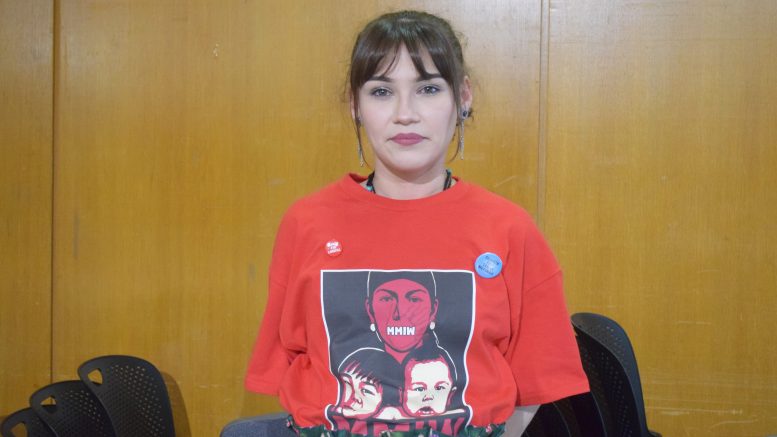Content warning: This article includes distressing details
“There’s no words in the human language that could ever, ever explain how I feel,” said Cambria Harris, whose mother was murdered in 2022 and left in a landfill north of Winnipeg.
Harris, a 24-year-old Ojibwe member of Long Plain First Nation from Winnipeg, spoke at the U of M on Monday at a Red Dress Day event, held by the Centre for Human Rights Research and Indigenous Engagement and Communications.
Harris shared the story of her mother, 39-year-old Morgan Harris, who was murdered by convicted serial killer Jeremy Skibicki along with three other Indigenous women — Ashlee Shingoose, Marcedes Myran and Rebecca Contois.
“On December 1, 2022, that’s the phone call that changed my life,” she said, describing the moment she learned that her mother had been murdered following a confession by Skibicki to police. “[Morgan] had dreams and aspirations just like anyone else.”

Harris shared photos and memories of her mother Morgan during her speech on Monday. Photo by Milan Lukes
Harris stated that she has long been an advocate for missing and murdered Indigenous women, girls and 2SLGBTQI+ people (MMIWG2S+). She shared a photo of herself from a 2014 demonstration holding a sign that stated “I will not be next” after the body of Tina Fontaine was found in the Red River.
“My mother fell victim to something I advocated for years before,” she said.
Indigenous women, girls, two-spirit and gender-diverse people are 12 times more likely to go missing or be murdered compared to non-Indigenous women in Canada, according to the federal government.
Searching Prairie Green landfill
Harris stated that after learning that her mother’s remains were suspected to be in the Prairie Green landfill, a private disposal site north of Winnipeg, she urged authorities to conduct a search.
A 55-page landfill search feasibility study estimated a timeline of 1 to 3 years ranging from $84 million to $184 million, noting that a successful outcome was not guaranteed — prompting the former Progressive Conservative (PC) provincial government to stand in opposition.
“I found my mind moving in different ways on how I could fight to change the system,” she said. “I never wanted that landfill search to boil down to something such as politics, political will and money, which they made it out to be.”
Harris stated that she had to put roses on the landfill’s fence to mourn without a traditional grave site.

A group gathered in the centre space of the John A. Russell Building at the Fort Garry campus to listen to Harris’s story. Photo by Milan Lukes
A camp was subsequently set up at Winnipeg’s Brady Road landfill, with an injunction being issued by the courts to remove a barricade that impeded access to the landfill.
Following the defeat of the PCs in the 2023 provincial election, the Prairie Green landfill search officially began in December 2024. Nearly three months later, the remains of Morgan Harris were recovered.
PC leader Obby Khan apologized on Monday “for the harm that was caused” from campaign advertisements during the last election that were in opposition of the landfill search. Harris told the Manitoban that the PC Party has yet to directly reach out to her “to apologize for the irreparable harms.”
In March, Premier Wab Kinew promised that there would be a search of the Brady Road landfill, where the remains of Ashlee Shingoose and Tanya Nepinak are believed to be located.
Police searched part of the landfill in 2012 for Nepinak, who was last seen in 2011, but the search was called off after a week. “She was where the searching landfill fight started,” said Harris.
“Instead of continuously coming up on stage and talking about intergenerational trauma, we need to start turning this into intergenerational strength,” said Harris, whose great-grandmother was a residential school survivor.
“A large part of my fight and motivation was to fight and change that system for the sake of our younger generations,” she said. “Speak up, speak out and don’t be afraid.”
The provincial government announced on Monday that more than $350,000 was generated from a $15-million MMIWG2S+ Healing and Empowerment Endowment Fund that was established last year. The funds will be split amongst five Indigenous organizations to support MMIWG2S+ families.
Significance of Red Dress Day

On Monday, red dresses — symbols meant to raise awareness about the issue of MMIWG2S+ — were hung from the walls of the centre space in the John A. Russell Building. Photo by Milan Lukes
Red Dress Day occurs annually on May 5 and serves as the National Day of Awareness and Remembrance for MMIWG2S+, inspired by Métis artist Jaime Black-Morsette’s REDress Project.
The project started in 2010 as an art installation when Black-Morsette hung hundreds of empty red dresses in public places to remind people of missing and murdered Indigenous women and girls.
Individuals can mark the day by wearing red and hanging a red dress in their window or yard.
“Each red dress is not just art, it represents a missing and murdered Indigenous loved one’s spirit […] and the emptiness of that dress is meant to represent someone that was supposed to still be here,” said Harris.
“It’s said that red is the colour that our spirits can see, that our ancestors can see, and that spirit world as they are journeying home. And so, we wear red in numbers not only to show solidarity as victims and survivors, but to show solidarity with our loved ones that they are not forgotten.”


